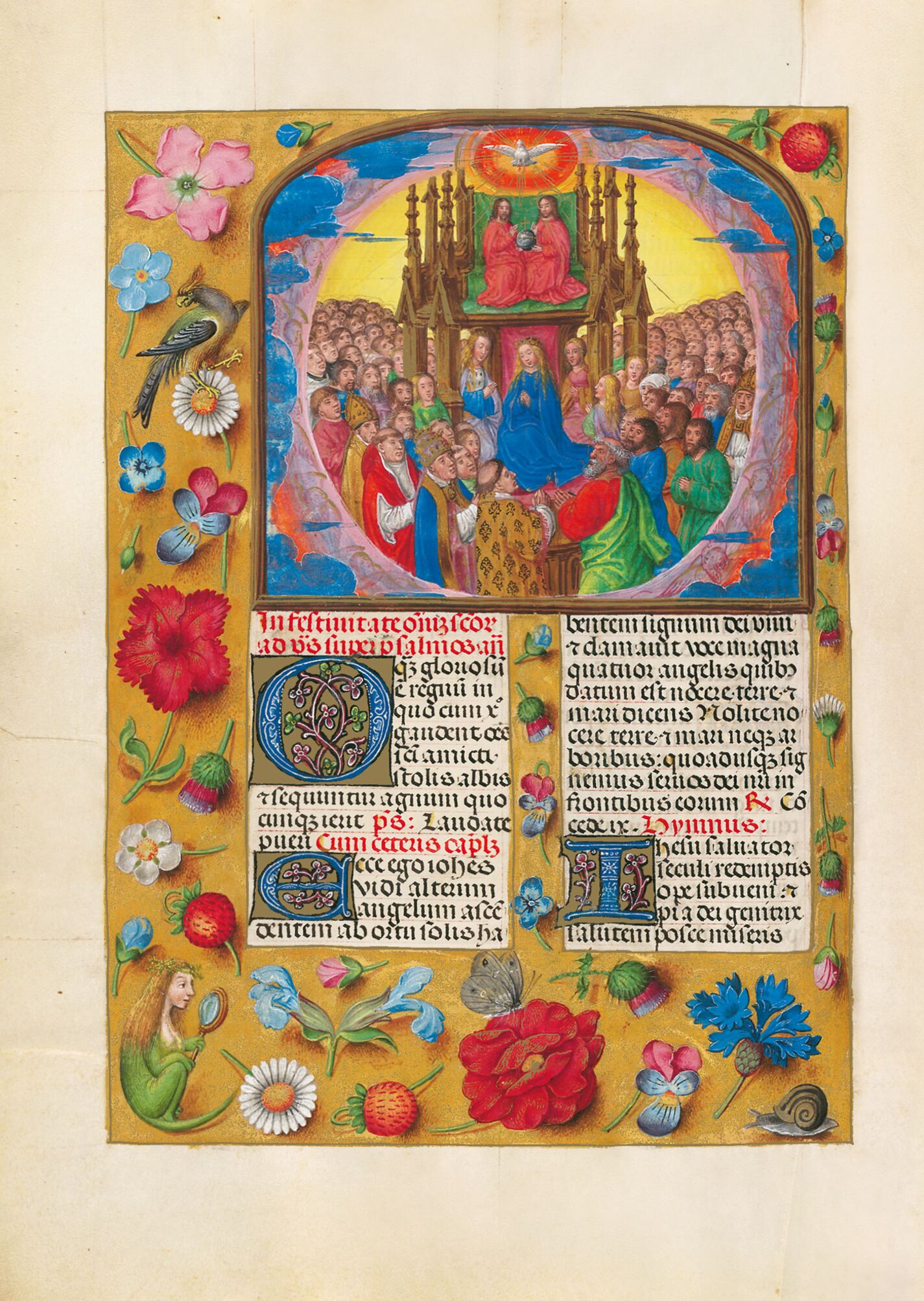This painting by Gérard Horenbout covers one third of the folio. It depicts the Holy Trinity shown in the iconographic type of the “Father and Son enthroned with the Dove in flight” in a horizontal layout, i.e. two persons with identical traits – young men with beards – sitting on a throne covered with a green brocade cloth of honour. They give blessings and hold a large, transparent sphere crowned with a cross. Above them is a radiant Holy Ghost in the form of a dove. The origin of this iconography must be sought in images in reliefs and coins in the art of Byzantium or the Roman Empire featuring two or three emperors sitting next to each other. Underneath and forming part of this double throne, is Our Lady in front of a purple cloth of honour flanked by two holy virgins. Then there is the host of the chosen ones amongst whom it is possible to distinguish St Peter (as an older, tonsured man), and another three figures in plain garments (possibly the apostles), a deacon (possibly St Laurence), a pope, a cardinal, several bishops, a priest, several men and a few damsels, all bathed in the divine light emanating from the three Persons and surrounded by a circular cumulus of whitish clouds pierced by other blue clouds. The flower-strewn border on a gold ground around the painting and text is typical of the Ghent and Bruges school with the addition of a drollery consisting of a reptile-like, zoo-anthropomorphic monster with a woman’s bust and head looking at itself in the mirror it holds.
There is little iconography of all the saints in the Church. The earliest representations of this theme were based on images of the twenty-five Ancients gathered around Christ in St John’s vision. Illustrations were subsequently assimilated from
City of God manuscripts showing the Lord, the only image representing the Holy Trinity, surrounded by angels and saints, as can be seen in a painting from an Augustinian work dated c. 1375 (Paris, Bibliothèque nationale, ms. fr. 22913, f. 408v). This iconographic theme can be divided into two series depending on whether the saints are around the Mystic Lamb or, as occurs in both the
Isabella Breviary and the
Hours of Joanna I of Castile (London, British Library, Add. Ms. 35313, f. 229v), the Holy Trinity.
